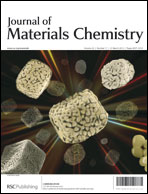Novel potentials for modelling defect formation and oxygen vacancy migration in Gd2Ti2O7 and Gd2Zr2O7 pyrochlores
Abstract
Ceramic materials play a critical role in the safe long-term immobilisation of nuclear waste and fundamental understanding of both radiation damage and healing processes are required in order to determine the suitability of proposed storage materials, such as pyrochlores. Here, new interatomic potentials are derived for the pyrochlores Gd2Ti2O7 and Gd2Zr2O7. Their accuracy and robustness is demonstrated by calculating and comparing values for a selection of point defects with those calculated using a selection of other published potentials. Frenkel pair defect formation energies are substantially lowered in the presence of a small amount of local


 Please wait while we load your content...
Please wait while we load your content...